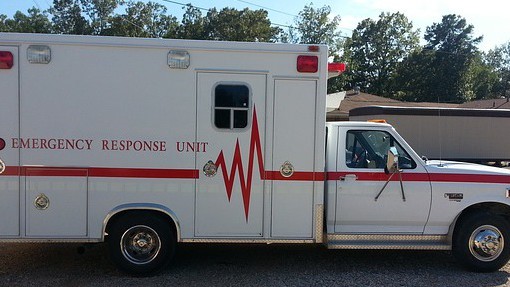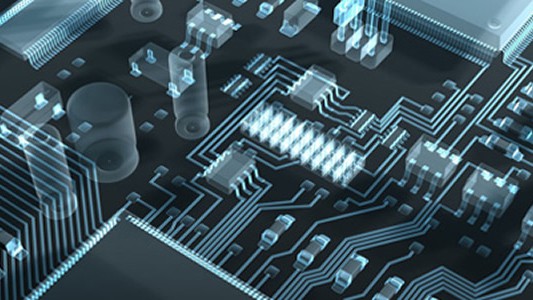First responders – police officers, emergency medical technicians, and firefighters – are essential to preserving people’s lives and properties during a crisis. The prompt arrival of an emergency vehicle with responders can sometimes mean life or death for the people in distress.
Computers play a crucial role in aiding first responders in performing their duties. Today’s article covers a specific one called a mobile data terminal and other kinds of computers that may be found in emergency vehicles.
What is an Emergency Vehicle?
Article Guide
An emergency vehicle is a transport used by emergency services to perform a call for service (e.g., a house on fire or an unconscious patron found in a gym steam room). Ambulances, fire trucks, and police cars are all examples of emergency vehicles.
Most emergency vehicles are very distinctive, with bold colorings or designs (e.g., the black and white striping of most police vehicles). They usually come equipped with sirens, light bars, rotating lights, and beacons to alert civilians that they’re answering a call for service. Emergency vehicles are customized for their specific duties, such as ladders and hoses on fire trucks.
Governmental entities like city or state agencies usually operate emergency vehicles. Some, like ambulances, are operated by private companies.
Mobile Data Terminal: Emergency Vehicles’ Vital Link
A mobile data terminal (MDT) is a specialized computer in virtually all emergency vehicles. It is also known as a mobile digital computer (MDC) and motor vehicle computer (MVC). Many are also referenced by their manufacturers (e.g., iMobile, KDT, etc.)
Private sector transport like taxicabs and delivery vehicles use MDTs as well.
MDTs use computer-aided dispatch (CAD) software to link the fleet vehicle to a central dispatcher, which directs them to their assignments and destinations. MDTs may also perform other functions depending on the vehicle’s function. Law enforcement uses records management systems (RMS) to pull up data like arrest records, while EMTs bring up maps and route information.
Police Car Computers
The police vehicle is a harsh environment for electronics. The vibrations from a car chase can shake an off-the-shelf laptop or tablet to pieces. Officer shifts can be long and offer no opportunity to recharge the computer’s battery.
The MDT is specially built to handle these conditions. Features found in most include
Portability: MDTs used by law enforcement are either laptops or rugged tablets. They must be securely installed inside the vehicle following specific protocols for driver safety, device security, and user ergonomics. Mini industrial PCs can also be found in police vehicles. Variable DC voltage input support is necessary to handle changes in power from the car’s battery, especially during ignition.
Rugged: Many MDTs have thicker cases to withstand shocks and drops. A solid-state disc or gel-mounted storage drive protects precious data from such conditions. MDTs are rated IP65 and higher to resist dust and water from damaging the interior.
Touchscreen: Officers sometimes have to bring their MDT out to the field. Industrial tablets are best for such tasks and should have a large screen (8”-12”), excellent outdoor viewability, and touchscreen capability for wet and glove modes.
Ambulance Computers
The emergency vehicle for emergency medical technicians (EMT) and paramedics is called an ambulance. Both personnel sometimes spend hours waiting in one for a call to service. When finally called, they must quickly arrive at their destination as timing can be literal life-or-death for the distressed person.
MDTs found in ambulances usually come with all the specialized features of police cars, like rugged design. EMTs and paramedics may also carry provided medical tablets when examining patients at the service location. In addition to being portable, rugged, and touchscreen-controlled, the tablets should also have the following:
Medical grade: The tablets are 60601-1 and 60601-1-2 certified to be safe near patients and not interfere with other medical devices.
Built-in barcode scanner and RFID readers: The former can scan any medications found on the scene, for example, while the latter allows only authorized personnel to access the tablet’s private electronic medical records.
Legacy port compatibility: Ambulances may be full of legacy devices – vital medical instruments and machines no longer supported by their original manufacturers. Medical tablets with expansion options, including USB, Ethernet, and serial ports, allow access to these legacy devices while providing modern features like increased cybersecurity.
Fire Engine Computers
Computers found in fire engines and related vehicles are similarly equipped like police vehicles and ambulances – portable, mounted, and loaded with appropriate software like CAD and building schematics. Two areas where they may differ include:
More ruggedness: Most firefighter computers are military grade and meet the US Department of Defense standards. Being military grade allows them to deal with greater shock, drops, and vibrations than the rugged computers in many police vehicles and ambulances.
Non-medical-grade: Firefighter computers typically are not medical grade unless found in the rescue ambulances used by the fire department.
A Partner for the Right Computer for Emergency Vehicles
First responders – police officers, emergency medical technicians, and firefighters – rely on their emergency vehicles to get them to their destinations during a call for service. All three services use mobile data terminals and other computers to perform critical work.
If you are looking for the best computer for your emergency vehicles, contact the team at Cybernet Manufacturing. Our industrial computers and tablets are built from the ground up to perform in demanding environments like firefighting and rapid patient transport.
Join the conversation and connect with us on this and other relevant topics – Follow us on Facebook, Twitter, and LinkedIn.
Mobile Medical Applications of the Industrial Computer: The Case of the Medical Emergency Vehicle
February 15, 2016
The demands of modern mobile healthcare are much more challenging than those of most other industries. This is where lives are at stake, and emergency situations arise at little to no notice. In recent years,…
0 Comments4 Minutes
4 Ways That AI will Affect Medical Computer Systems
August 28, 2018
The term “artificial intelligence” conjures images straight out of science fiction blockbusters: super-smart machines controlling all aspects of life, and often running wild to destroy their human creators. In reality,…
0 Comments6 Minutes
You Can't
Learn from a Pop-up
But we can deliver knowledge to your inbox!
We dive deep in the industry looking for new trends, technology, news, and updates. We're happy to share them with you.
Knowledge, News, and Industry Updates Right in Your Inbox




